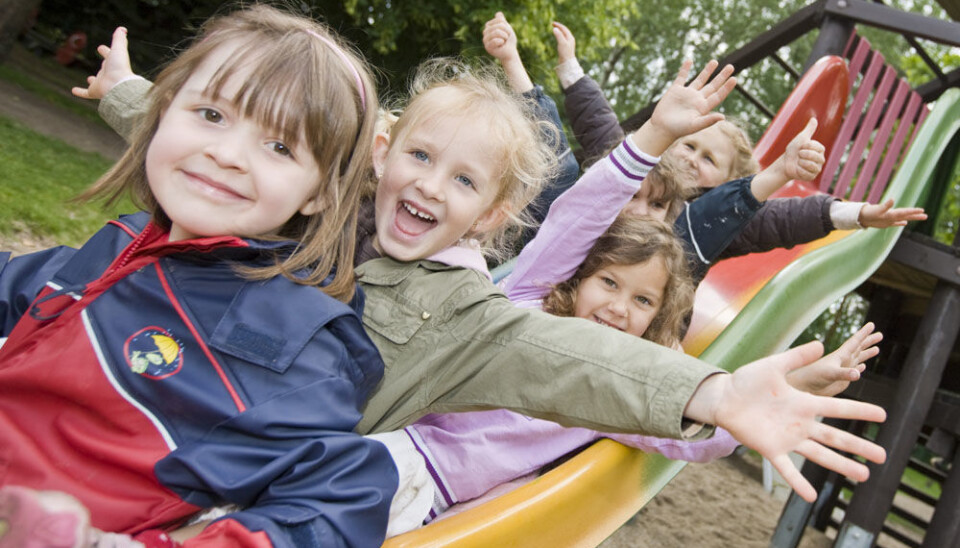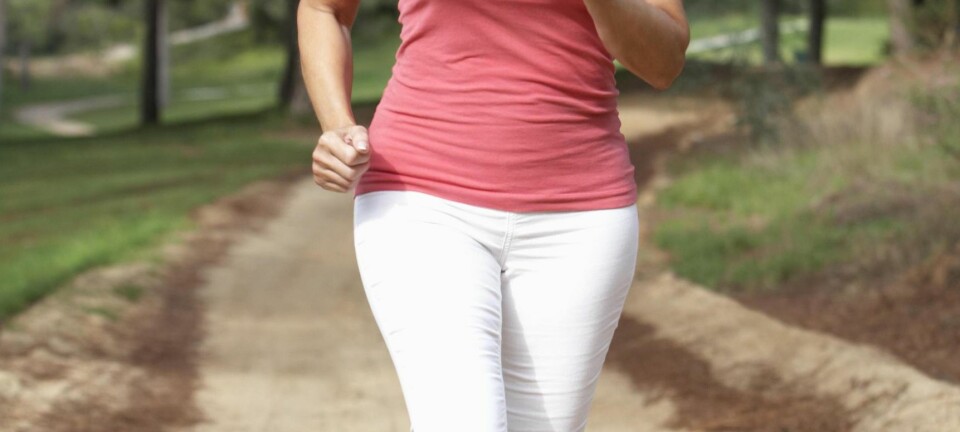
Free play more important than organised sport
If children are to have more exercise, they should not join sports clubs. Instead, they should have more facilities for free play in school playgrounds, a PhD project shows.
Some children have a lot of physical activity, while others have too little. Why is there a difference, and how do you ensure that all children get enough exercise?
These are questions that Glen Nielsen, a sports researcher at the University of Copenhagen’s Department of Exercise and Sport Sciences, has studied in a PhD project, ‘Children’s Daily Physical Activity’, which he defended recently.
Nielsen followed the activities of 500 Danish and 500 New Zealand children over several days using accelerometers – which measure movements. They were only taken off when the children bathed or slept.
His project is the first that has measured and studied children’s movements in minute detail, and it draws a completely new and surprising picture of children’s physical activity.
Less organised sport than free play
There’s an enormous potential at schools and recreation centres if they have good outdoor facilities.
Knowledge about children’s activities has previously stemmed from questionnaires or qualitative analyses that have mainly focused on which children and how many took part in sports activities.
But Nielsen’s study shows that organised sport is not the most important exercise factor for children. Most of their physical activity is in the school playground or at a recreation centre in the form of ‘self-organised physical activity’ – where the intensity is as high as in school-run or leisure-time sports activities.
“It was very surprising how great a part of children’s physical activity comes from free play, while organised sport only made a small contribution to the overall level of activity,” says the researcher.
Immigrant children as active as others
Until now it was thought that children from immigrant and low-income families were less active in leisure-time sports than other children. But the accelerometer measurements showed that these children were no less active than the others – in fact, there was a tendency for them to be more active.
“The largest contribution to the overall level of activity comes in the breaks between classes, from recreation centres or from playing in the neighbourhood environment,” says Nielsen. “Here, these children are at least just as active as the other children. This was perhaps the most epoch-making discovery.”
Girls less active than boys
While the children’s socio-economic background makes little difference to the level of activity, there is a gender difference. Previous studies have shown that as many girls as boys go to organised sports, but, says Nielsen, “Boys are almost twice as active physically in breaks and recreation centres, and this creates a large inequality in the overall picture.”
The researcher believes this is most likely due to cultural norms for what are regarded as boy and girl activities. But he adds that this need not be so: the New Zealand part of the study showed no difference between boys’ and girls’ levels of physical activity.
“It’s not biological, as some people think,” says Nielsen. “Firstly, there are almost no biological differences between boys and girls at this age. Secondly, there are many countries with no gender differences in physical activity.”
The great difference in boys’ and girls’ levels of physical activity is probably connected with the many boys who play football during breaks – a sport that has good facilities at schools.
Facilities are important: Nielsen’s study shows that having more facilities available results in more active children.
Add play facilities
“There are many children compared with the play facilities available, and this can be a limiting factor – there’s nothing to play with because others have taken it,” he says.
Additional play facilities at schools would be good for all the children, adds Nielsen, who will study what happens when additional play facilities are made available at schools.
Many attempts have been made to get more children to join sports clubs. Nielsen’s study indicates, however, that it is difficult for children whose parents have little experience with sport or do not have the financial resources to pay for subscriptions, transport and equipment, to join in the community spirit of sports clubs.
“But my research shows that club membership is not necessary when we talk of physical activity,” says Nielsen. “That’s not where the largest contribution comes from. There’s an enormous potential at schools and recreation centres if they have good outdoor facilities.”
Translated by: Michael de Laine





